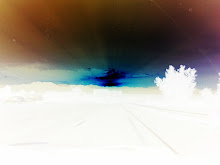Day 73 5 November 2010 Friday
Day 74 6 November 2010 SaturdayDay 75 7 November 2010 Sunday
Day 76 8 November 2010 Monday
An early morning train ride brought us to Luxor (notice a theme here), this travel stuff is almost like work.
But there were some nice views out the rain windows of the agriculture and life in the Nile Valley.
In the afternoon we visited the Luxor museum, which contained a well chosen selection of thoughtfully displayed artifacts from the local tombs and temples. We made a comical connection to one of the mummies on display. Back at home we had seen a documentary about an unknown mummy displayed in a curio museum in Niagara Falls since the 19th century. Recently, a researcher dated the excellently preserved mummy back to the time of Ramses I as well as performed DNA testing. In the documentary they concluded that this mummy may have been one of the great pharos. The Niagara Falls mummy has been repatriated to Egypt and we stumbled upon it in the Luxor museum.
Luxor(Thebes) (and later Memphis) was the base of government for the New Kingdom pharos from 1550-1069 BC (during the 18th-20th dynasties). Recognizing that the great pyramids of lower Egypt were essentially beacons for tomb raiders, the nobles of the New Kingdom attempted to disguise their tombs by placing the entrances to the tombs discreetly in an eroding hillside behind a pyramid shaped mountain. To date the Valley of the Kings contains over 60 tombs, the Valley of the Queens over 75 tombs, and the surrounding area is scattered with dozens more. Unfortunately, the public is not allowed to take pictures anywhere on the site of the main “Valleys”.
New excavations in this area on going.
Colossi of Memnon, the remains of the Temple of Amenhotep III, miss named by the Greeks who believed they were statues of Memnon.
Some hieroglyphs, cartouches and artwork from the temple.
The terraced funerary temple of Hatshepsut has been largely restored which exemplifies the architectural importance of this unique temple.
Some hieroglyphs, cartouches and artwork from the temple.
Karnak was the religious center of the New Kingdom of Egypt, built and modified over 1500 years.
The 2 sq km site contains two lakes, temples, courtyards, pylons, obelisks, statues, a sphinx lined path to the Nile, and at least a few thousand tourists.
The Hypostyle Hall, a sequoia like forest of papyrus shaped columns covering 6000 sq meters is breathtaking.
Oh and to get to many of these sights at a decent hour (aka, when it wasn’t boiling hot and when there weren’t too many people) we rented bikes for $3 each and left the hotel around 5:00am.
























No comments:
Post a Comment